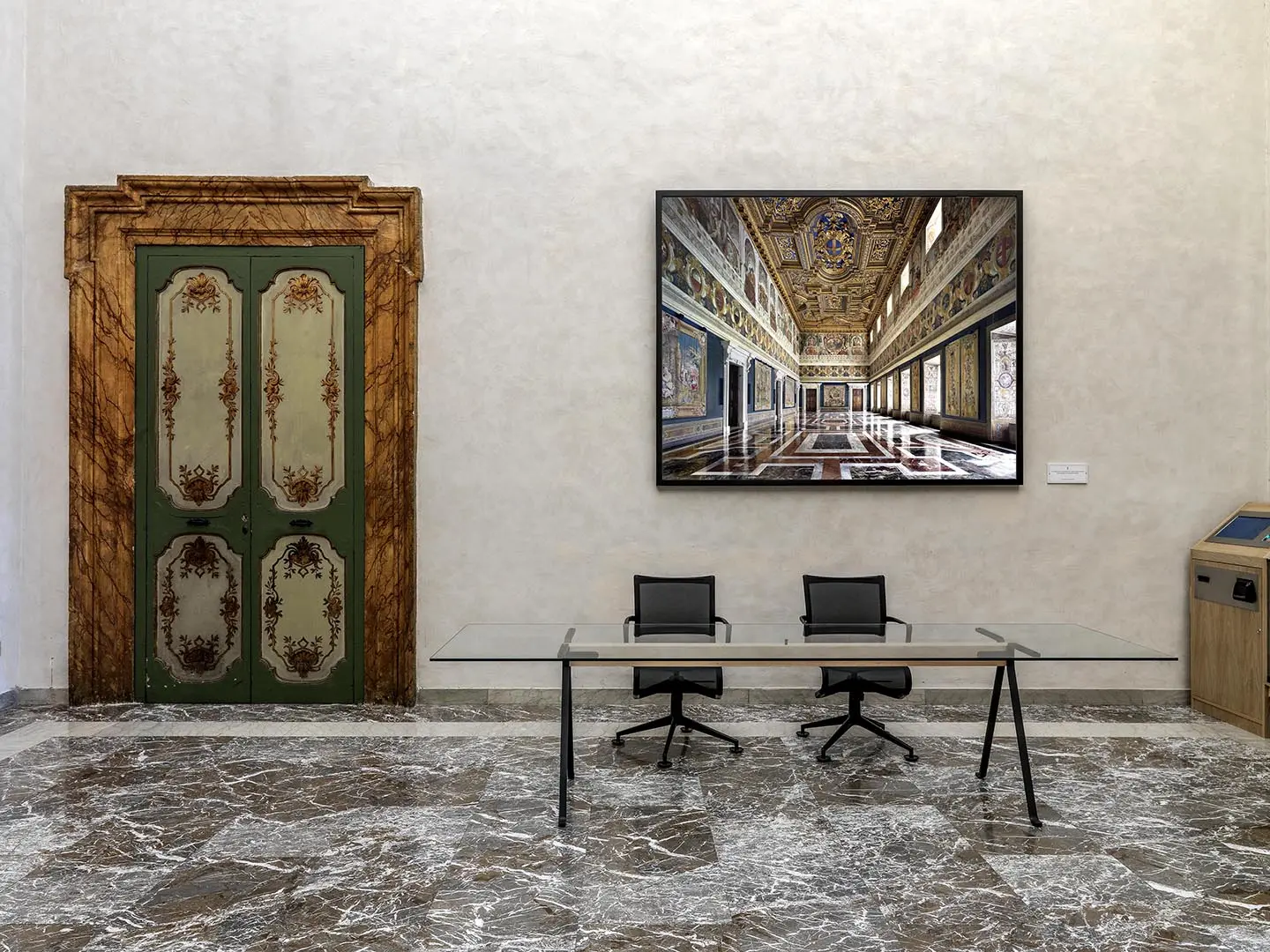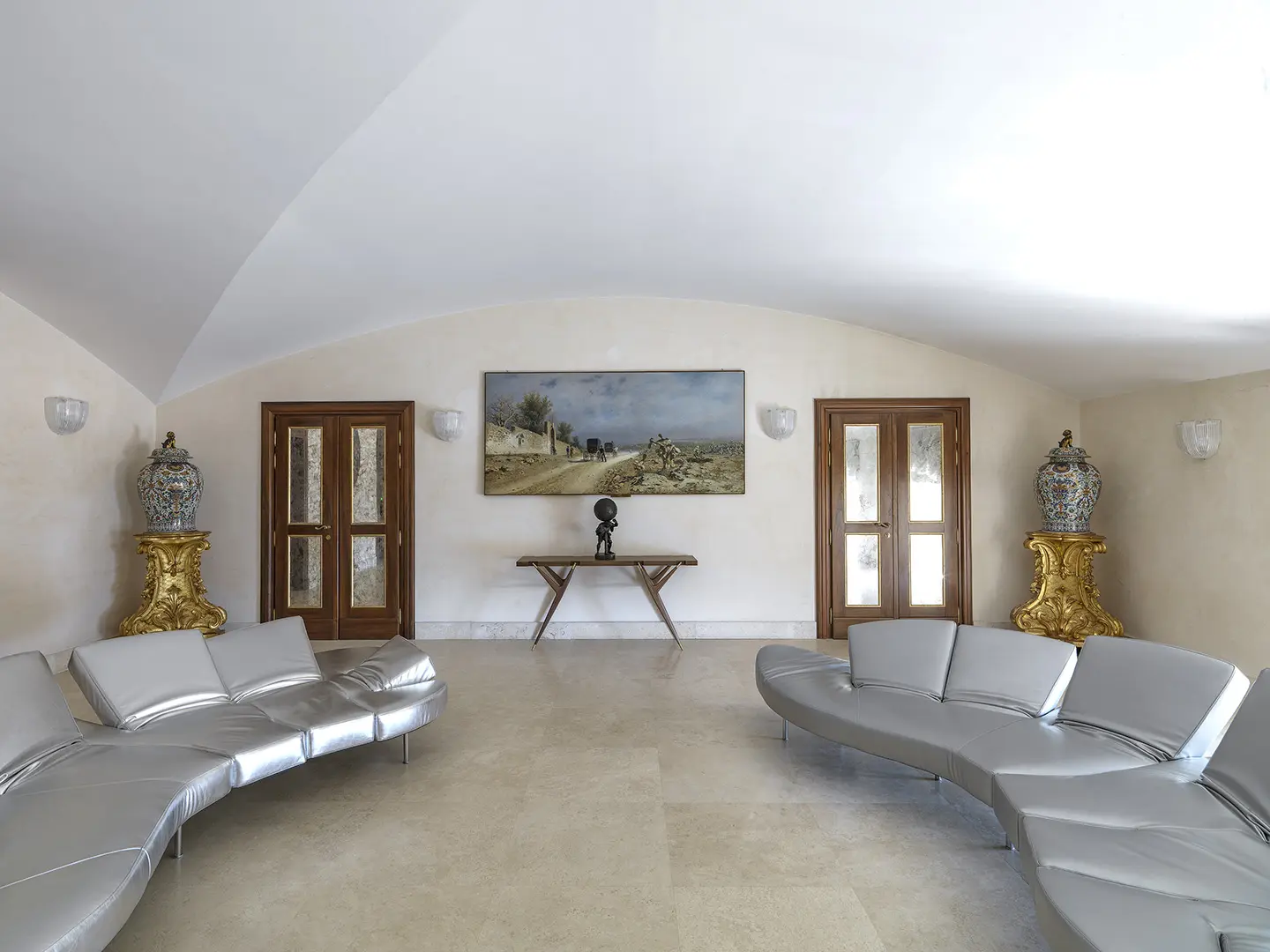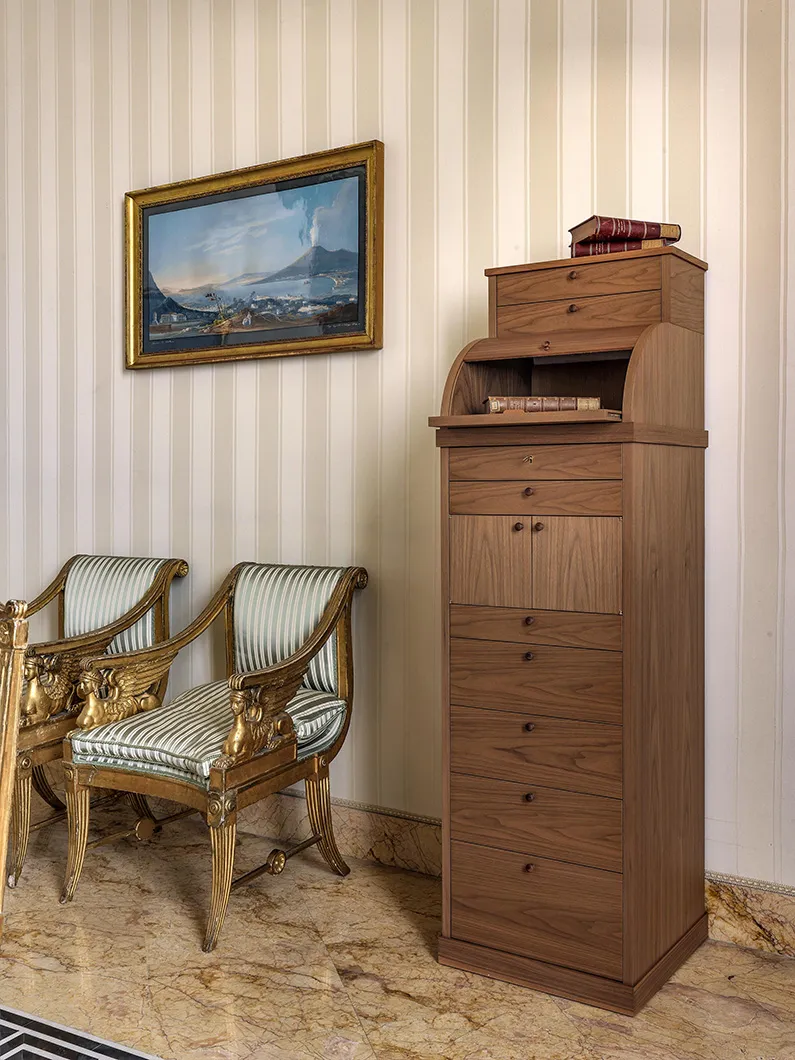In partnership with MiCodmc, a selection of establishments ripe for discovery during the 63rd edition of the Salone del Mobile.Milano, from 8th to 13th April

Palazzo del Quirinale, Studio alla Vetrata, Biagio lamp, Tobia Scarpa, Flos, photo Massimo Listri, 2019. Courtesy of Segretariato Generale della Presidenza della Repubblica
Made-in-Italy enters Italy’s Presidential Palace for the third edition of Quirinale Contemporaneo
It may seem incredible, but until two years ago, Italy’s Presidential Palace, commonly known as the “House of Italians”, didn’t have a single Gio Ponti item in its collection. The same applied to Castiglioni, Ico Parisi and Gae Aulenti. The whole palazzo was stuck in the Savoy era. But a project, Quirinale Contemporaneo, conceived in 2019 by President Mattarella himself, led to seventy-six design groups and 102 design objects still in production today taking up residence at the Palazzo. Curator Renata Cristina Mazzantini tells us about the initiative’s guidelines, requirements, and its latest acquisitions.

Palazzo del Quirinale, Visitor Reception Hall, Frate Table, Enzo Mari, Driade, photo Massimo Listri, 2019. Courtesy of Segretariato Generale della Presidenza della Repubblica
The Presidency of the Republic’s General Secretariat put a lot of effort into making the palazzo a welcoming place for visitors when the Quirinale first opened to the public on a daily basis. At the time, however, the palazzo’s image did not correspond to its nature; as Secretary-General Ugo Zampetti observed, it seemed like “a museum of a bygone era,” as if the clock had stopped when Italy was still a monarchy. It did not, therefore, represent the seat of the Presidency of the Republic, the highest level of the Italian Republic’s State judiciary.
The Quirinale represents our entire country, but its crystallized image failed to correspond to its modern-day reality, which is, of course, made up of the Italy our ancestors lived in, but also the Italy our children live in today. I was approached to add something contemporary to every room, supplementing the presidential palace’s heritage by acquiring new works of art and design that represent Republican Italy. Some rooms feature monumental works, others small but significant design objects, such as vases by Venini and Andrea Branzi.
The Quirinale has a vast artistic heritage, over a hundred thousand objects between artworks, porcelain, bronzes, and silverware. The Palace collects sculpture, paintings, architectural works and outstanding masterpieces of applied art… including design, a practice that, with its combination of flair and technical skill, seemed like a natural evolution for the collection.
It’s actually set off a serene dialogue between initiators and heirs to the same tradition, in the form of Murano glass, ceramics and furnishings. In a way, putting a Fornasetti in front of a Maggiolini, made by one of Italy’s finest cabinetmakers, makes the older piece more relevant today. By following this thread of creative artistic history, we can better understand the value of the past; remember, too, this is not a museum; these design objects end up being used.
Absolutely! The Quirinale is a living building. Bringing in design was a way of making it more comfortable and usable.

Palazzo del Quirinale, PA’ 1947 console desk, Ico Parisi, Cassina Torrino, photo Massimo Listri, 2021. Courtesy of Segretariato Generale della Presidenza della Repubblica
To showcase architects and designers who have made design history, plus emerging talent, via an ongoing selection of works. The venture was conceived outside of a museum framework, to promote Made in Italy and bring the Quirinale up to date, making the Palace’s image a mirror of our lifestyle. Design is one of Italy’s modern-day hallmarks.
Seventy-six design groups and 102 design objects, of which thirty-six were acquired in 2021. The design pieces were donated; artworks are likely to be added at a later date.
No. We didn’t include some icons whose work has gone out of production, because it isn’t a museum-style exhibition, but all of the major designers are here, alongside companies and designers responsible for ad hoc objects, for example Venini, Paola Lenti, Armani and Guzzini. When we were selecting products, we wanted to harmoniously integrate them into and enhance the existing furniture and lighting layout.
Design objects promote a design culture by delegating their production, their engineering, rendering them more economical, more technologically-advanced... Design may consequently be considered a democratic art form, in which the important thing is the design culture.
It may, to a certain extent, be considered as a form of conceptual art, in which the thing that counts is the idea, and therefore the design. It’s also a form of participatory art, because it’s based on the concept of interface, on how the end-user employs the item. It is also a form of “pop art”, influenced by globalization, the world of stuff and technological innovation, expressing many of Republican Italy’s salient features.
By avoiding clashes and establishing intriguing comparisons between past and present. The Quirinale is a national landmark in a country with an extraordinary past… That past can only be a resource if it is viewed as a privileged starting point, not an endpoint. The Palazzo’s appeal is enhanced if each generation adds something new, something that, one day, will be worthy of becoming an antique itself. I’ve noticed something similar in corporate circles: companies are starting to dig up old drawings from their archives, set up company museums. All this forms part of a growing desire to make the most of the tradition on which Italian creativity and expertise are based. We are beginning to understand that places acquire appeal when they tell the full story of their historical complexity through a diachronic interpretation.

In memoriam: David Lynch
The American director has left us at the age of 78. The Salone del Mobile.Milano had the honor of working with him during its 62nd edition, hosting his immersive installation titled “A Thinking Room”. An extraordinary journey into the depths of the mind and feelings. His vision will continue to be a source of inspiration.



 Salone Selection
Salone Selection















